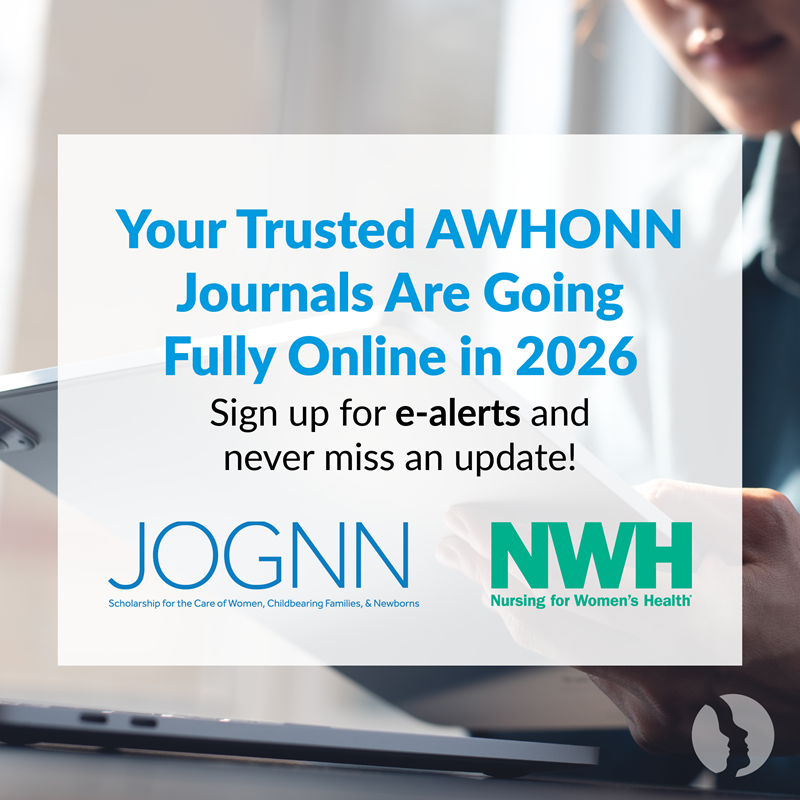Intrapartum Care Resources
- Analgesia and Anesthesia in the Intrapartum Period – Hard Copy
The purpose of this Guideline is to provide evidence-based clinical practice recommendations for nursing assessment and management of women in the intrapartum period choosing various types of analgesia/anesthesia for pain management. - Core Curriculum for Maternal and Newborn Nursing- 5th Ed.
The Core Curriculum for Maternal-Newborn Nursing, 5th Edition provides the most up-to-date, accurate information available on today’s maternal-newborn nursing practice. - Fetal Heart Monitoring Principles and Practices 6th Edition
This new edition continues to use the 2008 National Institute of Child Health and Development definitions for terms to describe fetal heart characteristics and rate and uterine activity findings. It contains the core principles of the AWHONN FHM Program and includes emphasis on a physiologic framework for decision making. an evidence-based approach to the care of laboring women and commitment to supporting the full range of FHR assessment technology including auscultation. - Perinatal Nursing – 5th Edition
This updated, evidence-based edition is a valuable resource for perinatal nurses practicing in all levels of maternal care, mother-baby units, newborn care, and for those nurses studying for certification examinations. Perinatal units should have this book as a ready resource for clinicians.
- Nursing Care and Management of the Second Stage of Labor- 3rd Ed. Download
This guideline provides updated and detailed practice recommendations for assisting women through the second stage of labor based on the best available evidence. It emphasizes the value of non-directed, open glottis pushing and upright positioning as essential nursing practice interventions that support the normal physiologic process of labor. - Nursing Care of the Woman with Diabetes in Pregnancy
AWHONN’s first evidence-based clinical practice guideline addressing diabetes, provides comprehensive recommendations for nurses who care for women with diabetes– types 1 or 2 and gestational diabetes (A1 or A2)–during pregnancy, labor and postpartum, and their babies. - Analgesia and Anesthesia in the Intrapartum Period – Electronic Download
The purpose of this Guideline is to provide evidence-based clinical practice recommendations for nursing assessment and management of women in the intrapartum period choosing various types of analgesia/anesthesia for pain management. -
Cervical Ripening and Labor Induction and Augmentation, 6th Edition
This practice monograph includes information on mechanical and pharmacologic methods for cervical ripening; labor induction and augmentation with oxytocin, a high alert drug; and nurse staffing levels and skills needed to provide safe and effective care with the use of cervical ripening and induction agents.
- A Project to Increase Nurses’ Comfort in Offering Bedpans Journal CNE Activity
Objective: To improve nurses’ comfort in helping laboring woman void on a bedpan after initiation of epidural analgesia, to increase the frequency of bedpan use in the labor and birth unit, and to decrease the use of continuous indwelling Foley catheters during the intrapartum period. - Using Scorecard Feedback to Improve Quantitative Blood Loss Measurement at Birth
Objective: To increase the percentage of cases in which quantitative blood loss (QBL) was documented by labor and delivery nurses for women giving birth.
- Continuous Labor Support for Every Woman
AWHONN asserts that continuous labor support from a registered nurse (RN) is critical to achieve improved birth outcomes. - Elective Induction of Labor
AWHONN advocates against elective induction of labor before 39 weeks gestation. Induction at or after or 39 weeks gestation is an option that should be carefully weighed against expectant management. Nurses support a woman’s choices and provide quality care during the entire perinatal period. - Role of the Registered Nurse in the Care of the Pregnant Woman Receiving Analgesia and Anesthesia by Catheter Techniques
AWHONN believes that registered nurses (RNs) who are not licensed anesthesia care providers should monitor but not manage the delivery of analgesia and anesthesia by catheter techniques to pregnant women. - Use of Nitrous Oxide in Maternity Care: AWHONN Practice Brief Number 6
Nitrous oxide (N2O) should be a vital component in the provision of quality maternity care, and the bedside labor nurse is the ideal candidate to initiate N2O use - Lower Extremity Nerve Injury in Childbirth: AWHONN Practice Brief Number 11
Nurses who care for women in the postpartum period should be alert to symptoms of LENI and should provide timely interventions.
- Maternal Fetal Triage Index (MFTI) Education
This interactive learning module introduces AWHONN’s new Maternal Fetal Triage Index, a five-level acuity classification index, describing how it is used to prioritize a woman’s urgency for provider evaluation. Clinical cases throughout the module and in the posttest assist the nurse to apply the concepts presented to prioritize the cases.
- Obstetric Triage Orientation Education
This interactive case study program prepares nurses orienting to the triage unit to care for women presenting with five common conditions — early term labor, rupture of membranes at term, decreased fetal movement, preterm labor symptoms and hypertension. - Mothers and Babies First (Relias): OB Hemorrhage
RELIAS OB NOW REVIEWED AND VALIDATED BY AWHONN! - Mothers and Babies First (Relias): Shoulder Dystocia
RELIAS OB NOW REVIEWED AND VALIDATED BY AWHONN! - Critical Care Obstetrics Education (CCOE) Eight Course Program
AWHONN’s Critical Care Obstetrics Education (CCOE) 8-course library will prepare clinicians to identify high-risk and critically ill pregnant people who need treatment, stabilization, or transfer to a higher level of care. - Critical Care Obstetrics Four Course Program-Bundle 1: PPH, PSH, Cardiac, Sepsis
Throughout these courses, you will learn the physiologic changes in pregnancy as well as additional risk factors that predispose pregnant people to hypertensive disorders, postpartum hemorrhage, and sepsis. - Critical Care Obstetrics Four Course Program-Bundle 2: DIC, DKA, VTE, Hemodyndmic
Through these courses, you will learn the physiologic changes in pregnancy as well as additional risk factors that predispose pregnant people to thromboembolic events, DKA, and DIC.
- Critical Care Obstetrics Education (CCOE) Perinatal Safety Standards Bundle: PPH and PSH
This 2-course safety bundle is comprised of a module on Postpartum Hemorrhage and a module on Severe Hypertension/Preeclampsia. - Perinatal Orientation and Education Program (POEP)
The Perinatal Orientation and Education Program (POEP) is highly effective in providing evidence-based, clinical education to perinatal nurses. POEP helps to mitigate patient risk, increase staff efficiency, and promote optimal obstetric outcomes while saving your healthcare system time and money. With POEP, your facility can establish consistent provision of high-quality care for mothers and infants. - Neonatal Orientation and Education Program, Fourth Edition (NOEP)
NOEP is a comprehensive, educational program that is highly effective in providing evidence-based, clinical education to neonatal nurses. NOEP helps to mitigate neonatal risk, increase staff efficiency, and promote optimal neonatal outcomes while saving your healthcare system time and money. With NOEP, your facility can establish consistent provision of high-quality care for high-risk and vulnerable newborns.
- Intermediate Fetal Heart Monitoring Course
This course addresses principles of fetal heart monitoring and may be used as a knowledge assessment tool to validate comprehension of experienced perinatal clinicians. This course includes lecture, hands-on skill stations including performing Leopold maneuvers, placement of an intrauterine pressure catheter and fetal spiral electrode, interpretation of fetal monitoring tracings using a case-based approach, identification of physiologically based clinical interventions, and communication and risk management principles. - Advanced Fetal Heart Monitoring Course
The Advanced Fetal Heart Monitoring course expands on knowledge and physiological principals presented in the AWHONN Intermediate Fetal Monitoring Course. This course uses a case study approach to focusing on the analysis of maternal-fetal physiology related to complex clinical information and fetal heart rate tracings.























